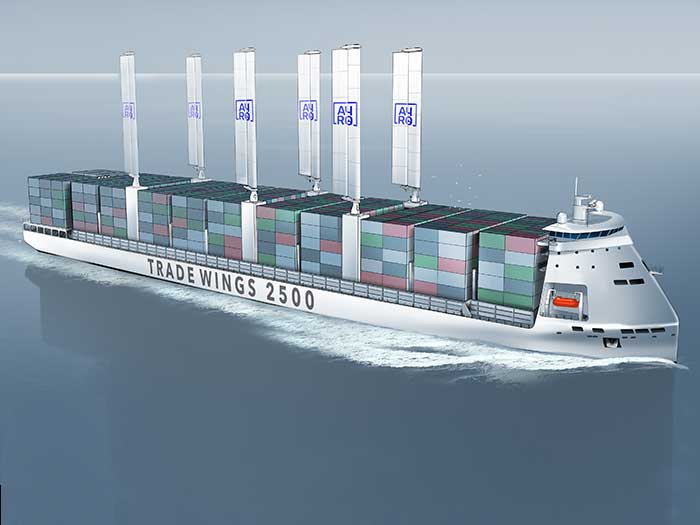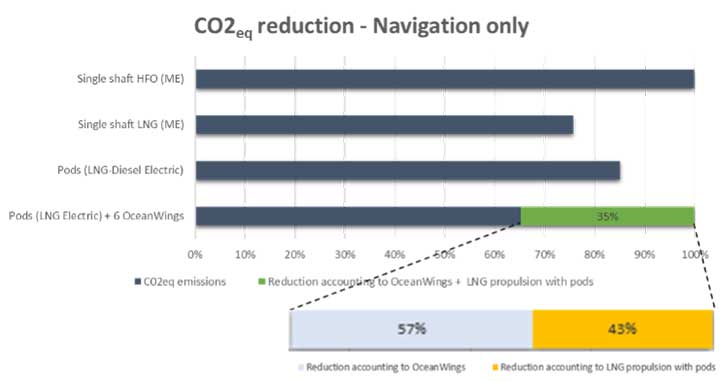
Wind-assisted box ship design promises big CO2 reductions
Written by Nick Blenkey
Trade Wings 2500 has been designed jointly by three French companies — VPLP Design, Alwena Shipping and AYRO — and China State Shipbuilding Co.’s design institute, SDARI.
Bureau Veritas has granted its Approval in Principle to an innovative design for a 2,500 TEU containership, the Trade Wings 2500, that promises significant reductions in CO2 emissions compared with current conventional designs.
In addition to six Oceanwings wing sails, it also features an LNG-electric podded propulsion system.
On a typical transatlantic route of 4,000 nautical miles, the Trade Wings 2,500 is projected to save on average 35% CO2-equivalent emissions compared to a conventional design. Out of these 35% savings, 57% come from the Oceanwings wing sail system, with the optimized LNG propulsion system delivering the remaining 43% savings.

The vessel has been designed jointly by three French companies — VPLP Design, Alwena Shipping and AYRO — and China State Shipbuilding Co.’s design institute, SDARI.
VPLP Design is a naval architecture firm with a track record in the sailing yacht market that has been promoting wind propulsion for commercial vessels since 2010. Alwena Shipping is a consultancy company providing shipowner and shipping stakeholders with a range of project management services. AYRO is the designer and manufacturer of the Oceanwings wing sails.
With an overall length of 197 meters and a breadth of 32 meters, the vessel offers a deadweight of 32,500 metric tons.
The six Oceanwings wing sails are installed on a vertical sliding mechanism to retract them partially while the vessel is in port, minimizing the impact on cargo operations. The LNG storage tank is based on GTT Mark III containment system and the LNG power plant is designed with pure gas four-stroke gensets. This architecture is a flexible platform offering the possibility of a future upgrade to fuels such as ammonia or hydrogen.
The design minimizes time in port operations, as maneuverability is increased with the pods and the hatch coverless design further speeds up cargo operations.
HIGH-POTENTIAL SOLUTION
“Wind-assisted propulsion is a high-potential solution that can contribute to the long-term decarbonization of the marine industry,” said Alex Gregg-Smith, Senior Vice-President Bureau Veritas for North Asia. “We have just released new wind propulsion system rules—and this innovative design, approved in principle by BV, including a sliding mechanism, demonstrates the feasibility of wind-assisted propulsion on board container ships with deck space limitations.
“Benefitting from a coverless hatch and LNG electric pod propulsion, the design provides both operational flexibility, improved efficiency and reduced carbon emissions, complying with, or exceeding, regulatory requirements. Bureau Veritas continues to address the challenges of the energy transition by providing solutions to the safety, risk and performance requirements for innovation in future fuels and propulsion systems.”




